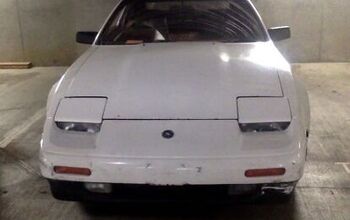Nah, We're Keeping Our Fuel Economy Targets: EPA

Fuel economy standards set by the Obama administration for the 2022 to 2025 model years will remain, the Environmental Protection Agency has stated.
The environmental regulator announced its proposed determination earlier today, part of its midterm review of the country’s corporate average fuel economy (CAFE) targets. Forget cheap gas and never mind the SUV craze — 54.5 miles per gallon is still the government’s goal.
While it still needs to make a final determination, it appears the EPA won’t be swayed by recent changes in the automotive landscape. The current targets were issued in 2012.
The regulator claims it made its determination after updating its analyses, consulting the industry and other stakeholders, and reviewing a technical assessment. More than 200,000 public comments flowed in from July’s draft technical assessment report (TAR).
In the TAR, the EPA, National Highway Traffic Transportation Administration (NHTSA) and California Air Resources Board (CARB) predicted that, on their present course, automakers would undercut the 2025 target. By its estimate, the country’s average gas mileage would only hit 50 to 52.6 miles per gallon by 2025.
Still, the regulators applauded automakers for adopting fuel-saving technologies. Smaller-displacement, turbocharged engines, stop-start systems, hybridization, direct injection and battery electric vehicles helped the industry make large strides towards the goal.
Lobby groups, especially the Alliance of Automobile Manufacturers, cried foul. Meeting the target meant an average of $1,800 tacked onto the sticker price of a vehicle, the Alliance claimed. The EPA disagreed, and now claims the actual cost is lower than it predicted in the TAR. According to the regulator, automakers and carbuyers can afford to reach the target.
“The auto industry can meet the standards primarily with advanced gasoline vehicle technologies and with very low levels of strong hybridization and full electrification (plug-in vehicles),” the determination reads.
The public comment period for the determination ends on December 30, 2016.

More by Steph Willems
Latest Car Reviews
Read moreLatest Product Reviews
Read moreRecent Comments
- Theflyersfan The wheel and tire combo is tragic and the "M Stripe" has to go, but overall, this one is a keeper. Provided the mileage isn't 300,000 and the service records don't read like a horror novel, this could be one of the last (almost) unmodified E34s out there that isn't rotting in a barn. I can see this ad being taken down quickly due to someone taking the chance. Recently had some good finds here. Which means Monday, we'll see a 1999 Honda Civic with falling off body mods from Pep Boys, a rusted fart can, Honda Rot with bad paint, 400,000 miles, and a biohazard interior, all for the unrealistic price of $10,000.
- Theflyersfan Expect a press report about an expansion of VW's Mexican plant any day now. I'm all for worker's rights to get the best (and fair) wages and benefits possible, but didn't VW, and for that matter many of the Asian and European carmaker plants in the south, already have as good of, if not better wages already? This can drive a wedge in those plants and this might be a case of be careful what you wish for.
- Jkross22 When I think about products that I buy that are of the highest quality or are of great value, I have no idea if they are made as a whole or in parts by unionized employees. As a customer, that's really all I care about. When I think about services I receive from unionized and non-unionized employees, it varies from C- to F levels of service. Will unionizing make the cars better or worse?
- Namesakeone I think it's the age old conundrum: Every company (or industry) wants every other one to pay its workers well; well-paid workers make great customers. But nobody wants to pay their own workers well; that would eat into profits. So instead of what Henry Ford (the first) did over a century ago, we will have a lot of companies copying Nike in the 1980s: third-world employees (with a few highly-paid celebrity athlete endorsers) selling overpriced products to upper-middle-class Americans (with a few urban street youths willing to literally kill for that product), until there are no more upper-middle-class Americans left.
- ToolGuy I was challenged by Tim's incisive opinion, but thankfully Jeff's multiple vanilla truisms have set me straight. Or something. 😉


































Comments
Join the conversation
Possibly the Trump administration can reign in the EPA. I've mentioned before, in this same forum, dramatically increasing fuel economy of automobiles can lead to increased highway deaths. If the manufacturers have to reduce weight to extremes to achieve these MPH figures, occupants will have less mass there to protect them resulting in more injuries and deaths. The EPA has never taken responsibility for this. Previous dramatic downsizing has done this before.
I'm sure any of the major automobile manufacturers can produce vehicles that meet the EPA's gas mileage target. The question is whether those vehicles will satisfy consumers and whether they will be affordable. Very few people keep their cars until they are worn beyond the point of practical repairability. If they did, the used car market wouldn't exist. If the EPA pushes too hard on emissions and the NHTSA on safety, buyers will opt to keep their old cars longer instead of trading them in on new ones. Both agencies might get their wishes on new vehicles but performance of the fleet actually on the road will change very little.